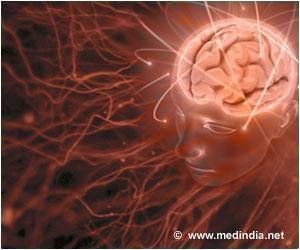Could Synapse Dysfunction Be the Key?

Parkinson’s disease, a common neurological ailment, affects 1% to 2% of the global population. It is distinguished by a variety of motor symptoms, including resting tremors, rigidity, and slowness of movement. These symptoms are caused by the slow death of dopaminergic neurons in a region of the brain known as the substantia nigra pars compacta (SNc).
Parkinson’s disease has long been a difficult issue for scientists to solve. The exact reason is unknown, but genetic factors, environmental effects, and aging all appear to play a part. Dopaminergic neurons are recognized to be crucial to the disease because they produce dopamine, a critical neurotransmitter.
Traditionally, it was widely assumed that the death of dopaminergic neurons was the first event in the genesis of Parkinson’s disease. This latest study, however, calls that view into question, implying that malfunction in these neurons’ connections may precede their degeneration.
Neuron Malfunction Precede their Degeneration in Parkinson’s Disease
An unusual example involving two sisters, both genetically susceptible to Parkinson’s disease due to a mutation in the PINK1 gene, prompted attention in this particular line of research. One sister was afflicted when she was 16, while the other was diagnosed when she was 48.
Advertisement
“We encountered two sisters with Parkinson’s that had disease onset 30 years apart and we tried to explain this discrepancy by studying their genes,” explained Dimitri Krainc, the chair of neurology at Northwestern University Feinberg School of Medicine and the director of the Simpson Querrey Center for Neurogenetics, who led the study.
Loss of Parkin Gene Linked with Parkinson’s Disease
They observed that the 16-year-old sibling had not just the PINK1 mutation but also a partial deletion of the parkin gene. This discovery prompted the researchers to wonder if parkin played a previously undiscovered role in the condition.
“There must be a complete loss of parkin to cause Parkinson’s disease. So, why did the sister with only a partial loss of parkin get the disease more than 30 years earlier?” Krainc said.
Both PINK1 and parkin are involved in the process of “recycling” aged or overworked mitochondria. If left uncontrolled, dysfunctional mitochondria can lead to cellular malfunction. Mitophagy is the process of recycling aged mitochondria. Parkinson’s disease can develop in people who have mutations in both copies of the PINK1 or parkin gene. This is due to inadequate mitophagy.
Parkin Gene also Linked with Dopamine Release
The researchers employed patient-derived midbrain neurons to conduct the study, which is critical because mouse and human dopamine neurons have different physiological properties, making findings in rodent models not immediately transferable to people.
The scientists discovered that parkin has an additional important role that was previously unknown. Parkin, in addition to recycling, functions in a separate pathway within the synaptic terminal. This route, which is unrelated to mitophagy, regulates dopamine release.
Parkinson’s Disease Begins with the Breakdown of Synapses
The most important takeaway for the common individual is that Parkinson’s disease does not always start with the death of neurons. Instead, it begins with the breakdown of synapses, which are the communication hubs where neurons exchange crucial information. According to Krainc, the findings “indicate that Parkinson’s disease begins with synapse dysfunction much before neurons start degenerating.”
Targeting Faulty Synpases Can Help Treat Parkinson’s Disease
This finding is interesting because it suggests that targeting faulty synapses could be a unique therapy method for Parkinson’s disease. We may have a better chance of properly controlling or perhaps preventing the debilitating effects of Parkinson’s if we intervene before neuron loss occurs.
While the study provides new optimism, Krainc emphasizes that some drawbacks and problems must be addressed. He added, “We need to find a way to target such synaptic dysfunction therapeutically as early as possible.” In other words, the road to a practical therapy based on this discovery is still in the works, and more research is needed to identify viable ways.
Nonetheless, the consequences of this study are significant. It emphasizes the significance of knowing the genetic origin of Parkinson’s disease in particular people. Dr. Krainc said, “It is important to examine the genes of each patient with Parkinson’s because knowing the genetic basis of the disease helps with therapeutic strategies.”
References:
- Parkinson’s disease-linked parkin mutation disrupts recycling of synaptic vesicles in human dopaminergic neurons
https:doi.org/10.1016/j.neuron.2023.08.018
Source: Medindia
Source link
#Synapse #Dysfunction #Key



